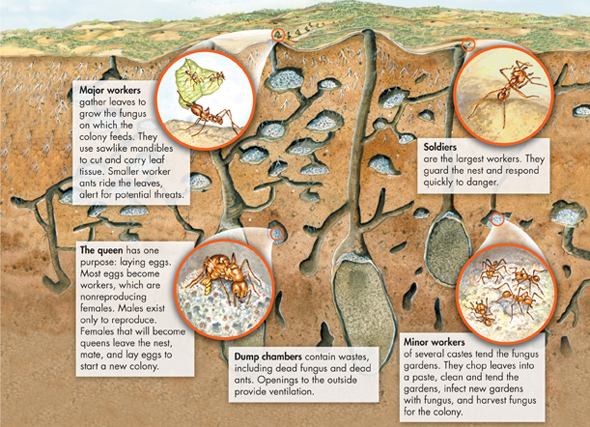Members of a society are often related to one another. Elephant herds, for example, consist of mothers, aunts, and their offspring. (Males are kicked out when they reach puberty.) The theory of kin selection holds that helping relatives can improve an individual's evolutionary fitness because related individuals share a large proportion of their genes. Helping a relative survive therefore increases the chance that the genes an individual shares with that relative will be passed along to offspring.
The most extreme examples of relatedness, and the most complex animal societies (other than human societies), are found among social insects such as ants, bees, and wasps. In social insect colonies, all individuals cooperate to perform extraordinary feats, such as building complex nests. In an ant colony, such as the one in Figure 29–9, all workers in the colony are females who are very closely related—which means that they share a large proportion of each others' genes. Worker ants are also sterile. For this reason it is advantageous for them to cooperate to help their “mother” (the queen) reproduce and raise their “sisters” (other workers). Male ants function only to fertilize the queen.
MYSTERY CLUE

When threatened by predators, adult elephants in a herd form a defensive circle around the youngest members. What may have triggered this behavior in the elephants at the watering hole?

FIGURE 29–9 An Ant Society In a leaf-cutter ant society, only a single queen reproduces. Different groups of ants within the colony perform other tasks.
ddTable of Contents
- Formulas and Equations
- Applying Formulas and Equations
- Mean, Median, and Mode
- Estimation
- Using Measurements in Calculations
- Effects of Measurement Errors
- Accuracy
- Precision
- Comparing Accuracy and Precision
- Significant Figures
- Calculating With Significant Figures
- Scientific Notation
- Calculating With Scientific Notation
- Dimensional Analysis
- Applying Dimensional Analysis




